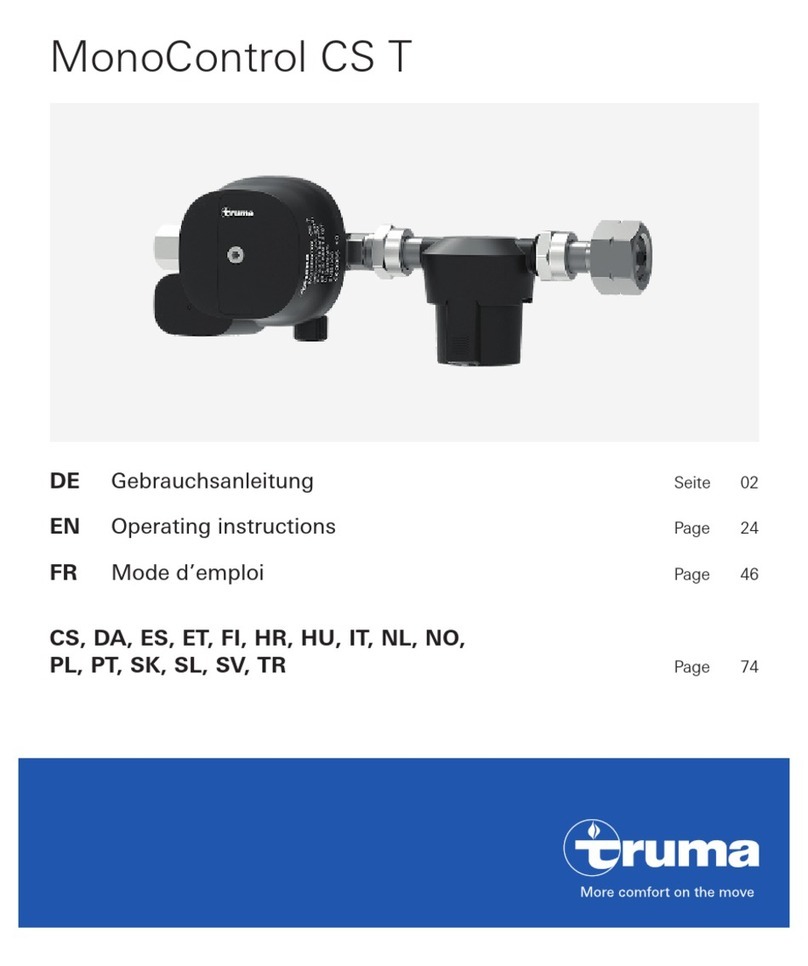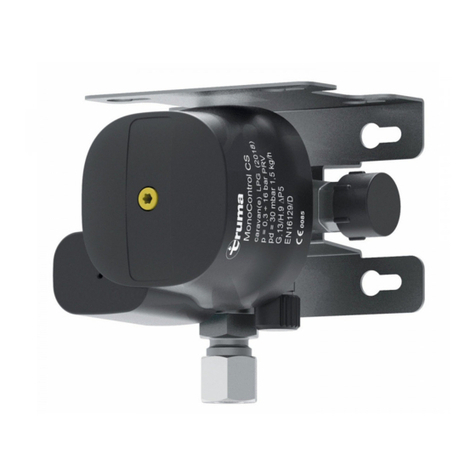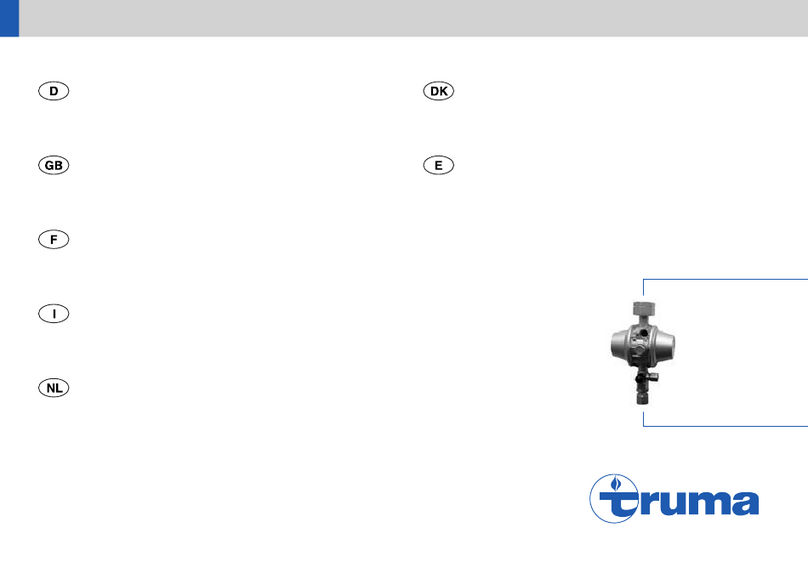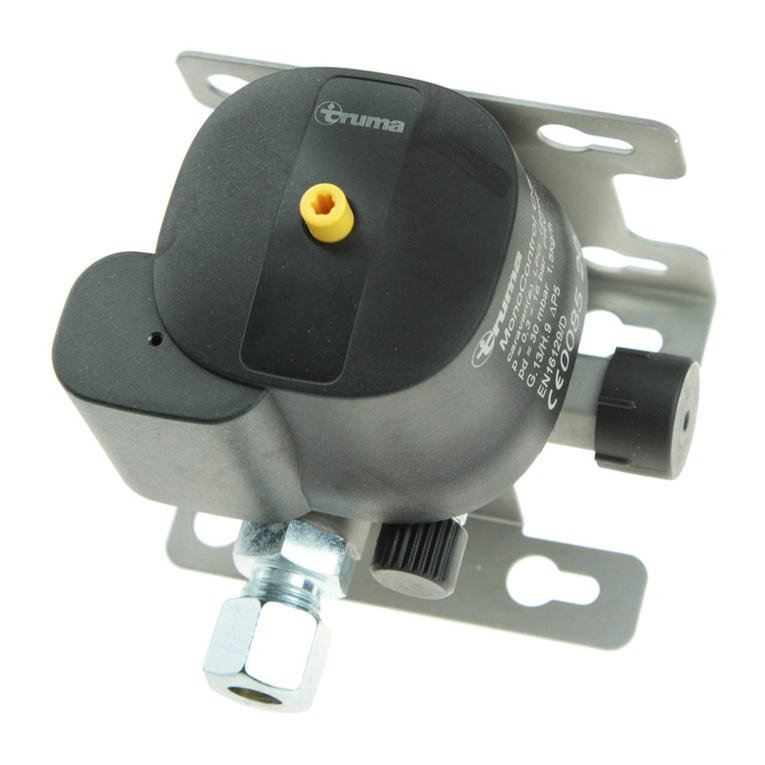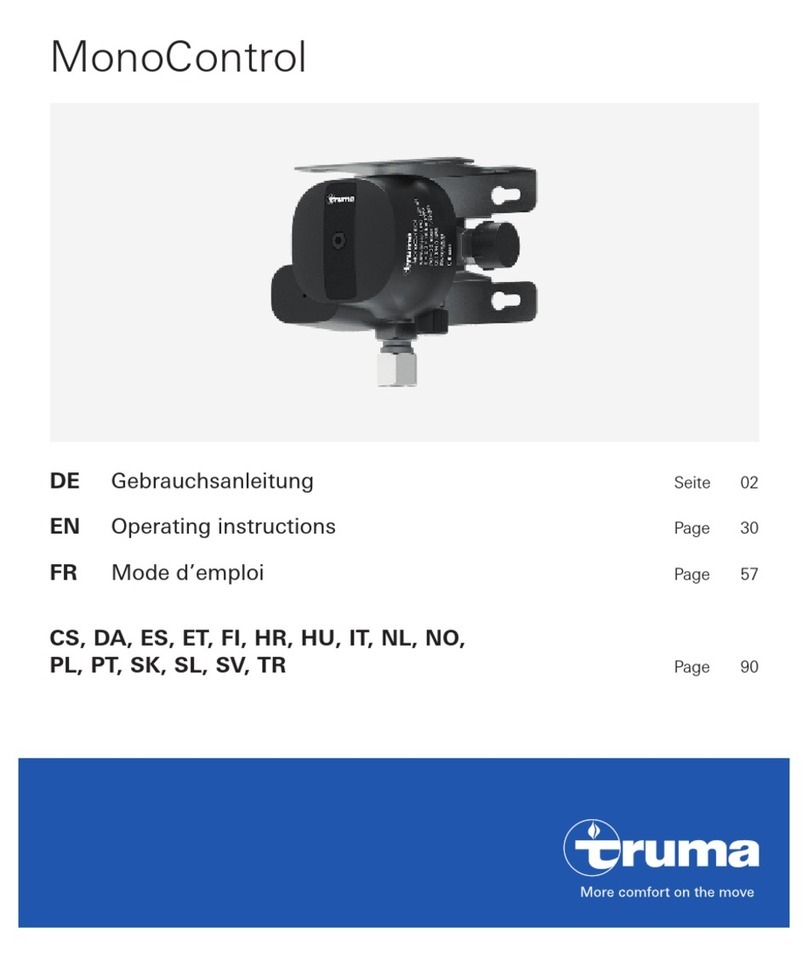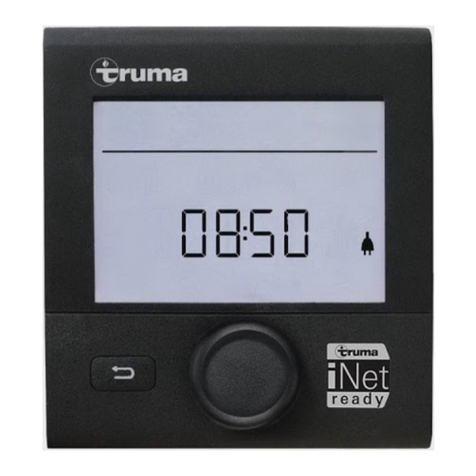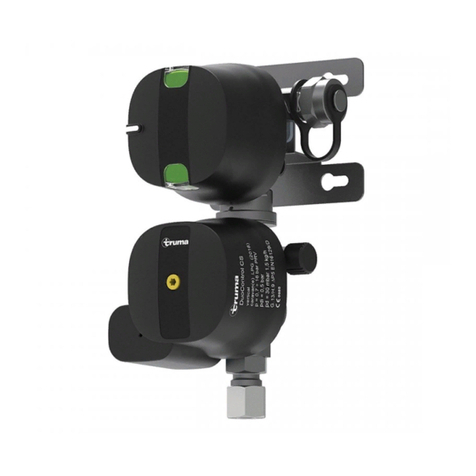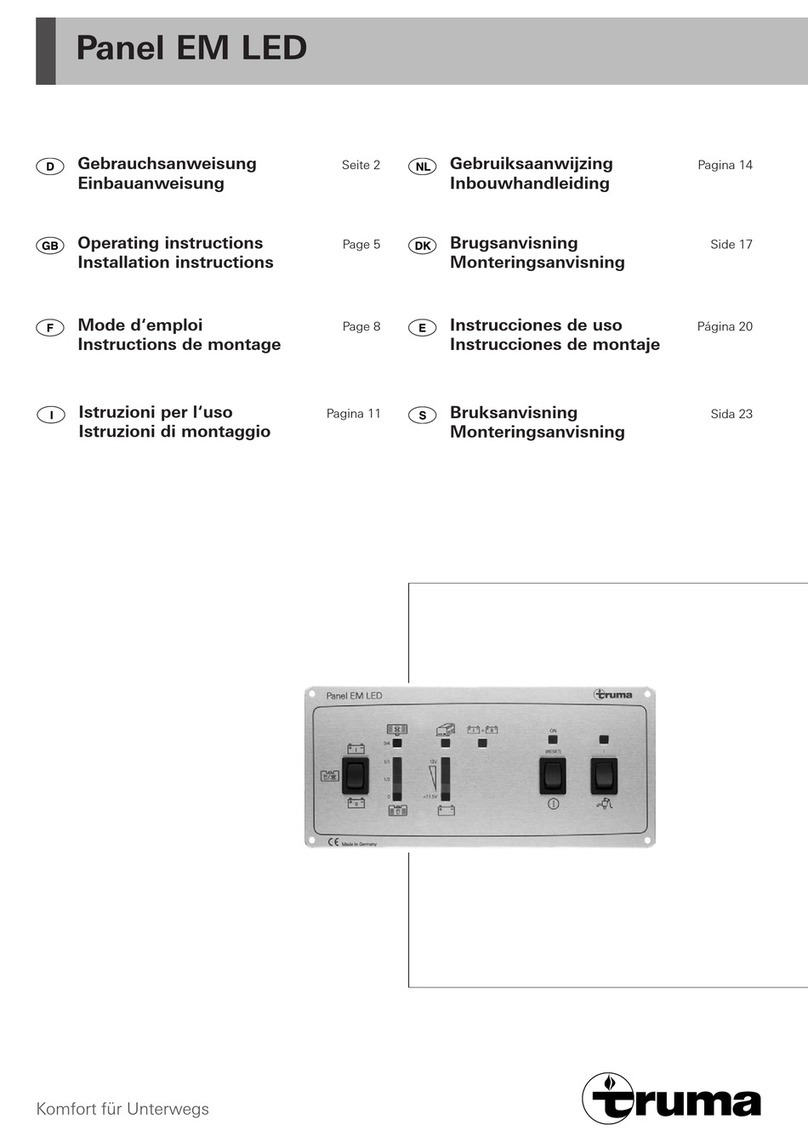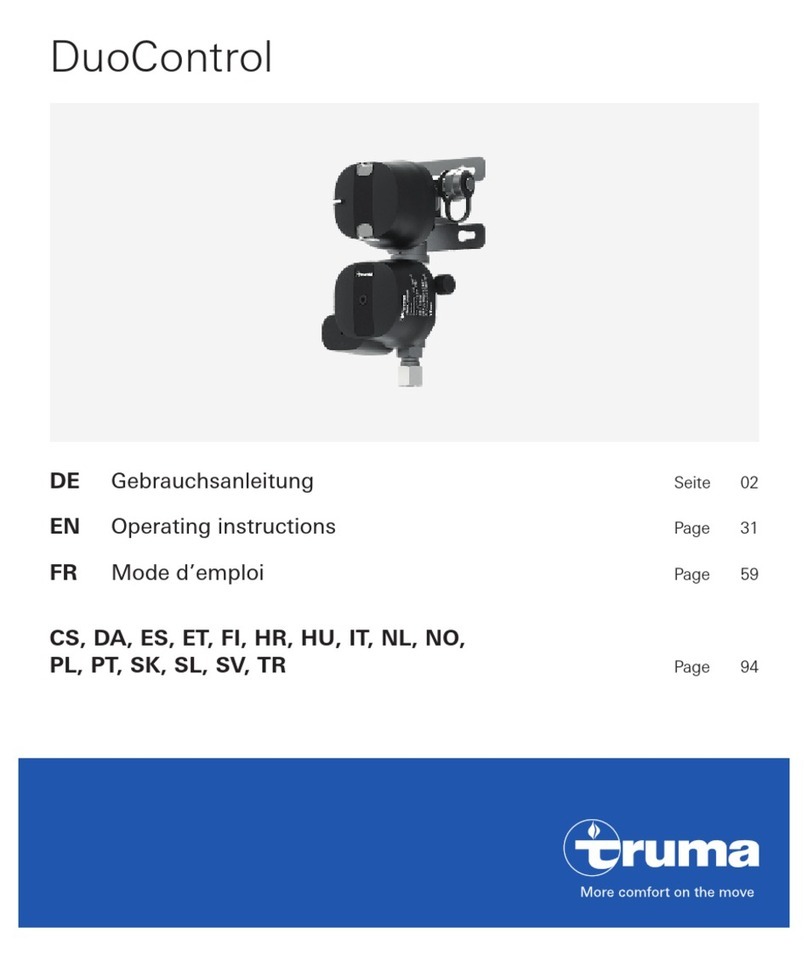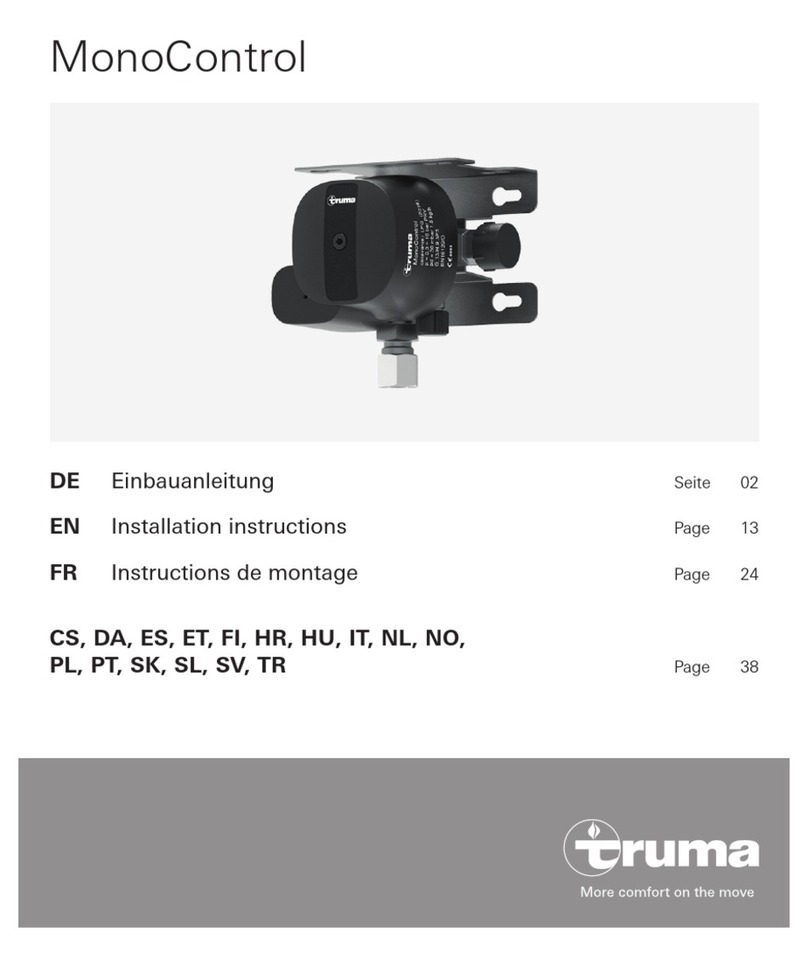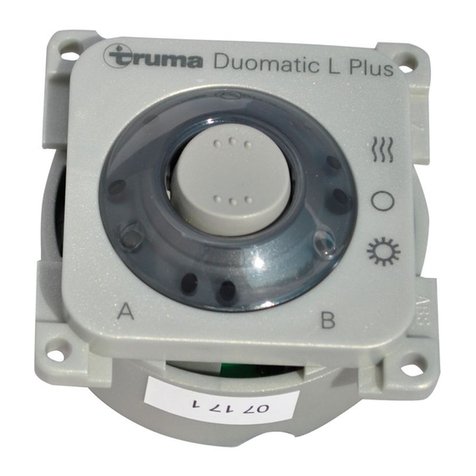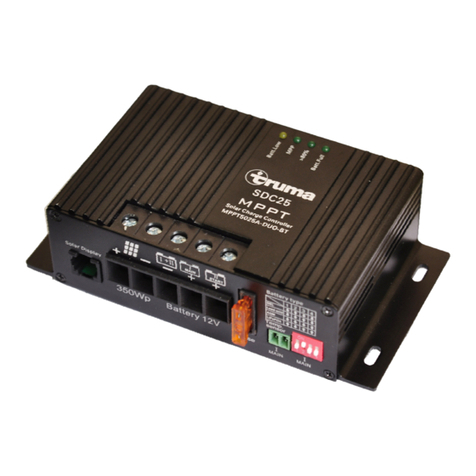
2
Verwendungszweck
SecuMotion ist eine Sicher-
heits-Gasdruck-Regelanlage für
Caravans und Motorcaravans.
Die Gasdruck-Regelanlage ge-
währleistet einen gleichmäßigen
Ausgangsdruck von 30 mbar bei
einem zulässigen Eingangsdruck
von 0,3 – 16 bar.
Für den Anschluss der Gasfla-
sche an die Gasdruck-Regelan-
lage ist ein Hochdruck-Schlauch
mit Schlauchbruchsicherung
(SBS) zwingend erforderlich. Die
hierfür notwendigen Hochdruck-
Schläuche bietet Truma in den
gängigsten Anschlussvarianten
für europäische Gasflaschen an
(siehe Seite 68 – 69).
SecuMotion regelt und über-
wacht den Verbrauch des
Flüssiggases. Wird der Nenn-
verbrauch überschritten oder
sinkt der Druck am Ausgang
der Gasdruck-Regelanlage un-
ter 27 mbar (z. B. durch einen
Gasrohrbruch), schaltet der inte-
grierte Gas-Strömungs-Wächter
(GSW) den Gasfluss ab.
Die Verwendung der Gasdruck-
Regelanlage in geschlossenen
Räumen (Haushalt, Mobilhei-
men) auf Seewasserbooten oder
in EX-Zone 0 (z. B. Tankwagen)
ist nicht zulässig.
Die integrierte Überdrucksi-
cherung entspricht den Anfor-
derungen als Sicherheitsein-
richtung für den gewerblichen
Bereich gegen unzulässig hohen
Druckanstieg (z. B. in Deutsch-
land nach BGV D 34).
Die Druckregelgeräte
und Schlauchleitungen
müssen spätestens 10 Jahre
(bei gewerblicher Nutzung
8 Jahre) nach Herstellungsda-
tum gegen neue ausgewechselt
werden. Der Betreiber ist dafür
verantwortlich.
Hinweise zum Betrieb der
Gasanlage während der Fahrt.
Bei Motorcaravans ab Baujahr
01/2007 muss gemäß der Heiz-
geräterichtlinie 2001/56/EG mit
den Ergänzungen 2004/78/EG
und 2006/119/EG für den Betrieb
einer Flüssiggasheizung wäh-
rend der Fahrt, eine Sicherheits-
Absperreinrichtung vorgesehen
SecuMotion
